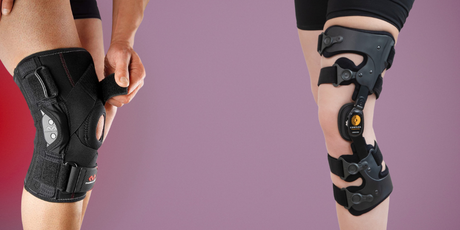A swollen knee is known to be a classic sign of inflammation. But, in fact, inflammation is a rare cause of swollen knees, and there are other, much more likely causes. For example, acute trauma can cause bleeding that results in swelling. Overuse injuries can also cause swelling. Whatever the cause, swelling of the knee is a symptom that the knee joint is not functioning optimally.
EXERCISE WITH A SWOLLEN KNEE?
If you have problems with a swollen knee, you should start with an examination to find out what the underlying cause is. Until a diagnosis is made, caution should be exercised with high loads on a swollen knee, especially if the load triggers pain. Once the diagnosis is made, the cause of the swelling is eliminated and the body is allowed to recover, the swelling should gradually disappear. Treatment of the calf muscles and personal rehab exercises, such as toe raises, are usually very good as they lead to improved circulation of blood and lymph up to the heart.
WHY DO YOU GET A SWOLLEN KNEE?
There are three main causes of swollen knees: acute trauma, overuse injuries, or (the less likely) inflammation of the knee.
- Trauma often occurs in sport, or if there is otherwise a lot of external force on the knee. ACL and meniscus injuries can result from such trauma. In the case of an acute injury to a tissue inside the knee, the symptoms can be dramatic with significant pain and swelling.
- Overuse injuries, on the other hand, occur without trauma and arise when any part of the joint receives repetitive loads that wear down a structure to the point of pain. The reason for this is a malfunction in the knee or other joint that prevents the forces from being distributed properly.
- Inflammation can also cause the knee to swell. However, inflammation is the least common cause of a swollen knee.
WHAT TO DO IF YOU HAVE A SWOLLEN KNEE?
If you have a strained or swollen knee, it is important to rest from strenuous exercise to give the injury time to heal. You will usually recover if you rest for a few days and then train with less load, shorter time or lower intensity than before. A possible route is to switch to a form of exercise that does not put so much strain on the hamstrings.
During the rest, it is good to stay active with gentle exercises of a rehab nature. A classic and simple exercise is toe raises, but there are also many other exercises to create variety.
It is important to note that if the swelling in the knee gets worse, despite active rest, you should seek medical attention.
A knee brace can be a good idea both during rehab and when returning to more normal exercise. Knee pads also work well as a preventive measure to avoid future knee problems.
TREATMENT OF SWOLLEN KNEES
If you have an acute injury where the knee swells considerably, our recommendation is that the knee be first examined by a doctor. This is to make a correct diagnosis and thus decide on the right treatment.
If it is found that the injury does not require surgery or other medical care, it is instead good to get help from, for example, a naprapath or physiotherapist. They can help with treatment and rehabilitation programmes that suit the individual's injury history and symptoms.
The main purpose of treating swollen knees and other knee problems is to create conditions for the body to move without compensations that lead to overload. When all joints move well and you have an established muscle contact, the conditions are created for the knee to remain injury-free and pain-free, or allowed to heal if you are already in pain.
FAQ: Swollen knees
What are the primary causes of knee swelling?
Knee swelling can originate from three main sources: acute trauma, such as sports injuries involving the ACL or meniscus; overuse injuries due to repetitive stress that wear down joint structures; and, although less common, inflammation.
Is it safe to exercise with a swollen knee?
Exercising with a swollen knee should be approached with caution. It's crucial to have an examination to diagnose the source of swelling before continuing with high-load exercises. If pain accompanies the load, activities should be modified or avoided until the swelling subsides.
How should a swollen knee be managed at home?
Home management of a swollen knee includes resting from strenuous activities and engaging in gentle, rehab-focused exercises such as toe raises to improve blood and lymph circulation. If swelling worsens even after active rest, medical consultation is advised. Knee braces or knee pads can also be helpful during rehabilitation and as a preventive measure.
What professional treatment is recommended for swollen knees?
A4: When the knee swells significantly, especially due to an acute injury, medical examination is recommended for the correct diagnosis. Depending on the severity, treatment may not involve surgery but could include support from a naprapath or physiotherapist, who will assist with appropriate treatment and rehabilitation programs tailored to the individual's condition.












